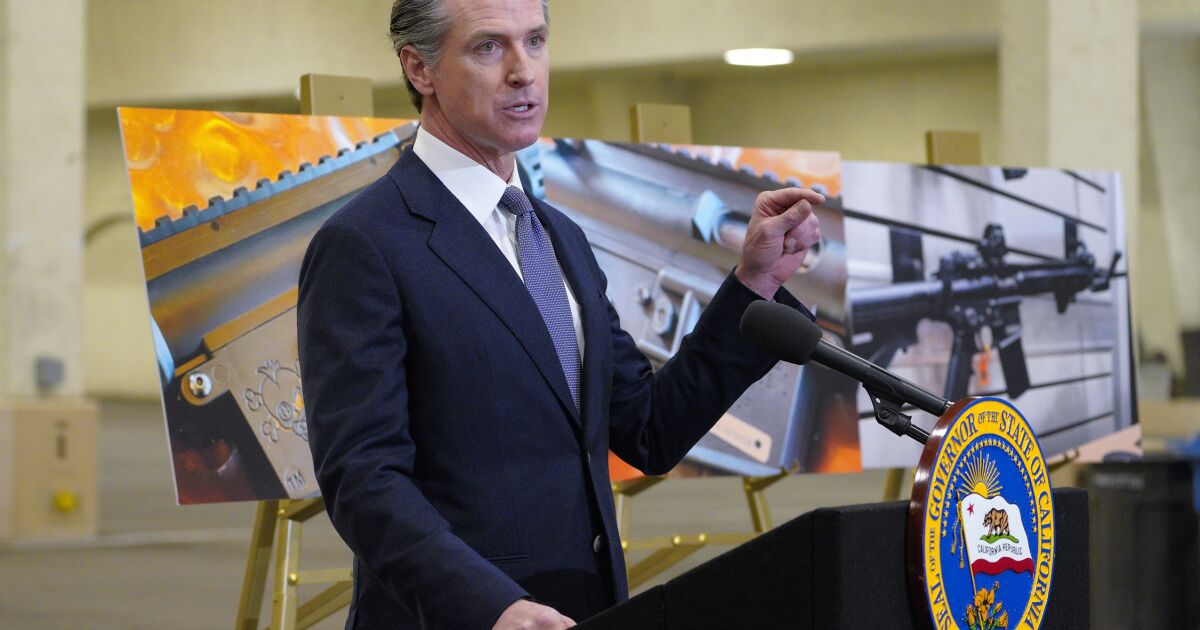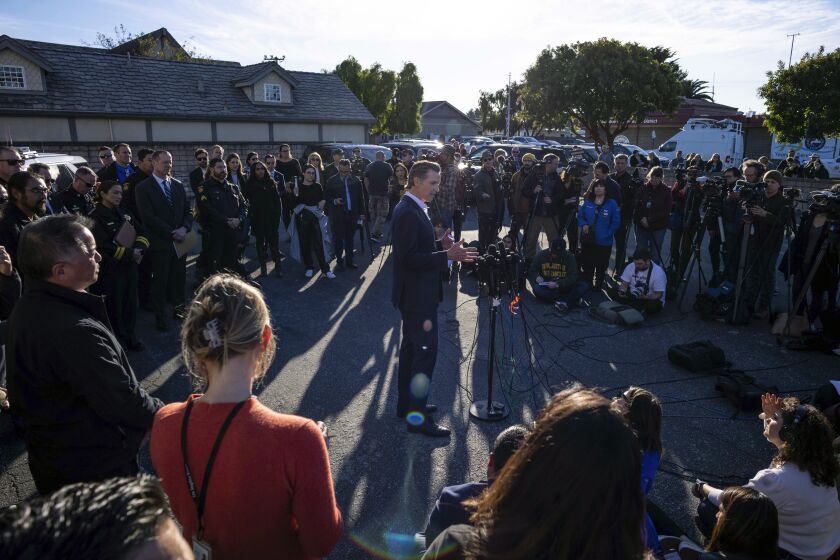It is very rare that anything monumental gets done in America’s political system without strong public support. That’s certainly the case with gun control.
The emphasis here is on strong support.
What we need to attain that is a hefty gun safety TV ad campaign.
Polls have consistently shown that the vast majority of citizens support gun control — but not strongly enough to force meaningful bills through Congress, such as requiring universal background checks and banning assault weapons, particularly their high-capacity magazines.
It’s not at the top of voters’ priority lists — and hardly thought about between mass killings at schools, churches, bars and dance halls.
That’s not true, however, of hardcore gun addicts. They’re single-issue voters whose candidate choices often depend solely on a politician’s uncompromising allegiance to unrestricted gun rights. That enables them and the gun lobby to wield extraordinary influence over members of Congress, especially Republicans.
And it’s why America’s national firearms restrictions — unlike California’s — are pathetic. The problem for California is that we’re vulnerable to weak laws in other states. Their residents can bring weapons into California that are illegal to sell here. Or we can shop across the border.
So, the majority’s resolve and demand — in California and nationwide — need to be intensified so that before a candidate can win their vote, there must be a pledge to support major gun regulations.
How can voters be transformed from being impassive to insistent?
The same way people were turned against tobacco, became more cautious about drinking and driving, and learned the consequences of tossing cigarettes out the car window: video ads.
We saw public service TV ads showing the debilitating and deadly consequences of cigarette smoking and drunken driving. “Friends don’t let friends drive drunk.” Some of us remember Smokey Bear in a bass voice pleading, “Only you can prevent forest fires.”
During World War II before TV, Rosie the Riveter public service posters encouraged women to work in shipyards while men were off fighting. On the radio, as enemy submarines stalked our coasts, we heard that “Loose lips sink ships.”
It was all highly effective.
Similarly, we could now have TV ads urging, “Protect yourself from guns.”
The message wouldn’t need to be anti-gun, per se. It could be about meaningful background checks and using a “red flag” law to report a gun owner who’s acting strangely and seems to pose a threat; his weapons could be temporarily confiscated.
Gov. Gavin Newsom has spoken more eloquently than anyone else about the three California mass shootings that occurred in rapid fire sequence, killing at least 24.
Show caskets and victims to visualize the evil of gun violence.
And display ugly assault rifles with their high-capacity magazines to raise in people’s minds the question of why these weapons of war are needed outside the military. The narrator wouldn’t need to ask the question. Viewers would ask themselves.
Inform people that more Americans die from gunshots — 45,222 in 2020 — than in traffic accidents. Between 2011 and 2020, gun deaths increased 33%. Nearly 80% of murders involved firearms.
“Ads like that can have a huge impact — like those against drunken driving and for wearing seat belts,” says Christian Heyne, vice president for policy and programs at Brady, which campaigns against gun violence.
“States with the weakest gun laws are the same states with the highest rates of gun deaths,” he adds. “That’s not an accident. It’s a correlation…. Until the federal government acts, we’re going to continue to see these tragedies.”
UCLA law professor Adam Winkler, who specializes in gun law, says that “messaging about the danger of firearms can be effective in changing people’s attitudes about them.”
“One reason the NRA has been so successful over the last half century,” he continues, “is it has consistently pushed the narrative that guns are effective tools for self-defense. The data suggests otherwise. Actually, you’re in more danger if you have firearms in the home.”
California already has the strictest gun laws in the nation, but Democrats in Sacramento say more are needed.
Easily reached guns are fired in domestic violence. Kids shoot them accidentally. They’re preferred in suicides.
Those dangers could be mentioned in a TV ad.
So could a commitment to gun owners that the aim is not to seize all their firearms. That would be impossible anyway, politically and constitutionally.
A reader, Rich, emailed me: “Most gun owners I know will support most of what [Gov. Gavin] Newsom says the nation needs. What we all fear is that will never be enough…. It is the ‘never give an inch because they will take a mile’ philosophy.”
“Banning high-capacity magazines is probably the most reasonable start,” the reader adds. “Have Newsom come out and say, ‘This is what we should do and that will be the end.’ Then he can get some traction.”
The gun lobby wouldn’t agree, but they’re hopeless. Gun control advocates should be targeting Rich and his sensible pals.
I called veteran Democratic consultant Bill Carrick, a skilled producer of TV political ads. He’s a realist who implied I was nuts.
“How do you get that done?” he asked. “Who’s going to pay for it?”
Good point. Certainly not Congress when Republicans control the House. TV networks may offer discounts, but it’s doubtful they’d give away ad time for free. Neither would cable, streaming services or social media.
But Newsom and the state Legislature seem to always have enough money for whatever they want. This governor could be a pioneer in producing gun safety spots that were a national model.
“You’re going to have to get private dollars somewhere,” Carrick says.
Well, there are 735 billionaires in America worth collectively $4.7 trillion. You’d think two or three would be willing to invest in gun safety.



